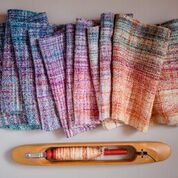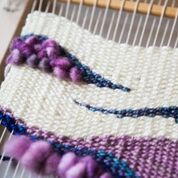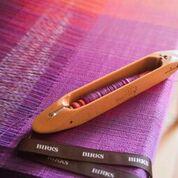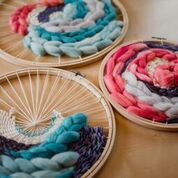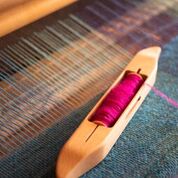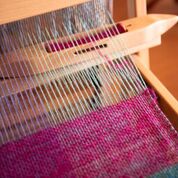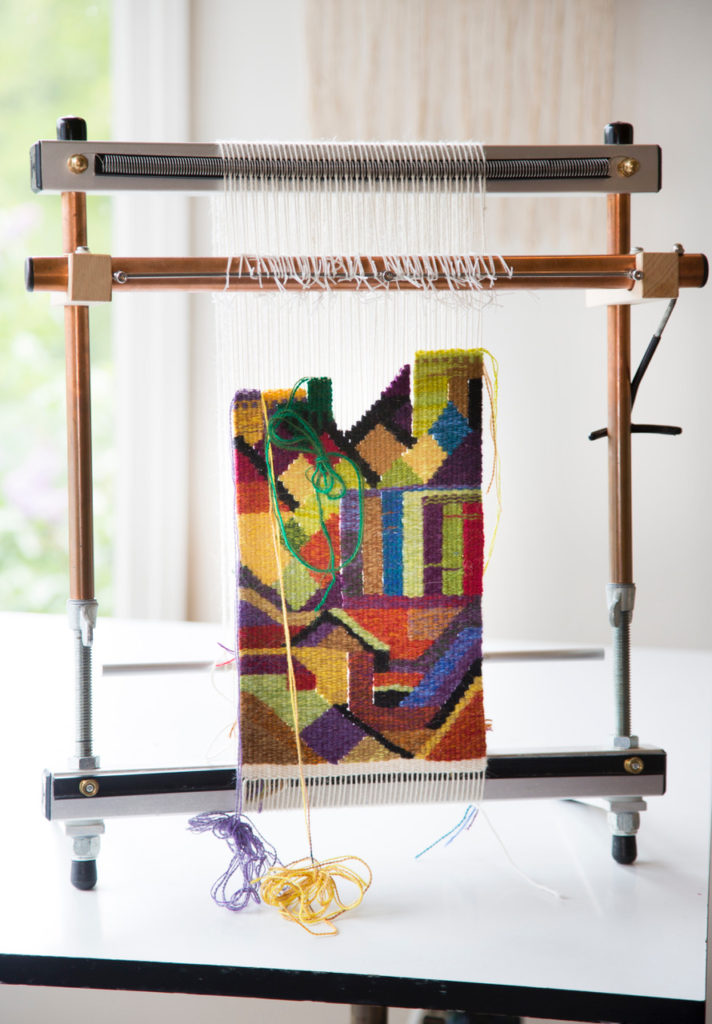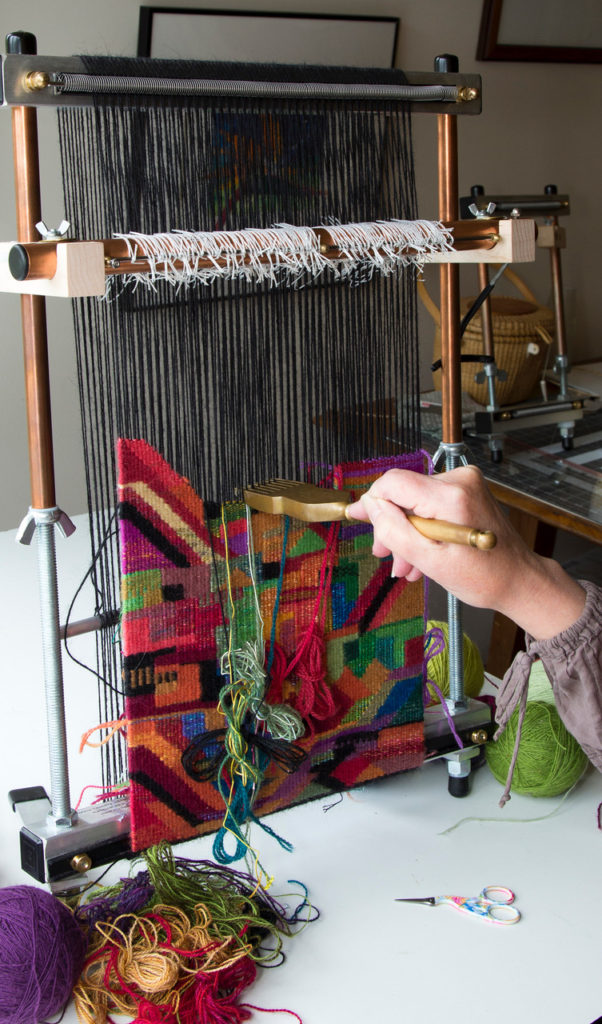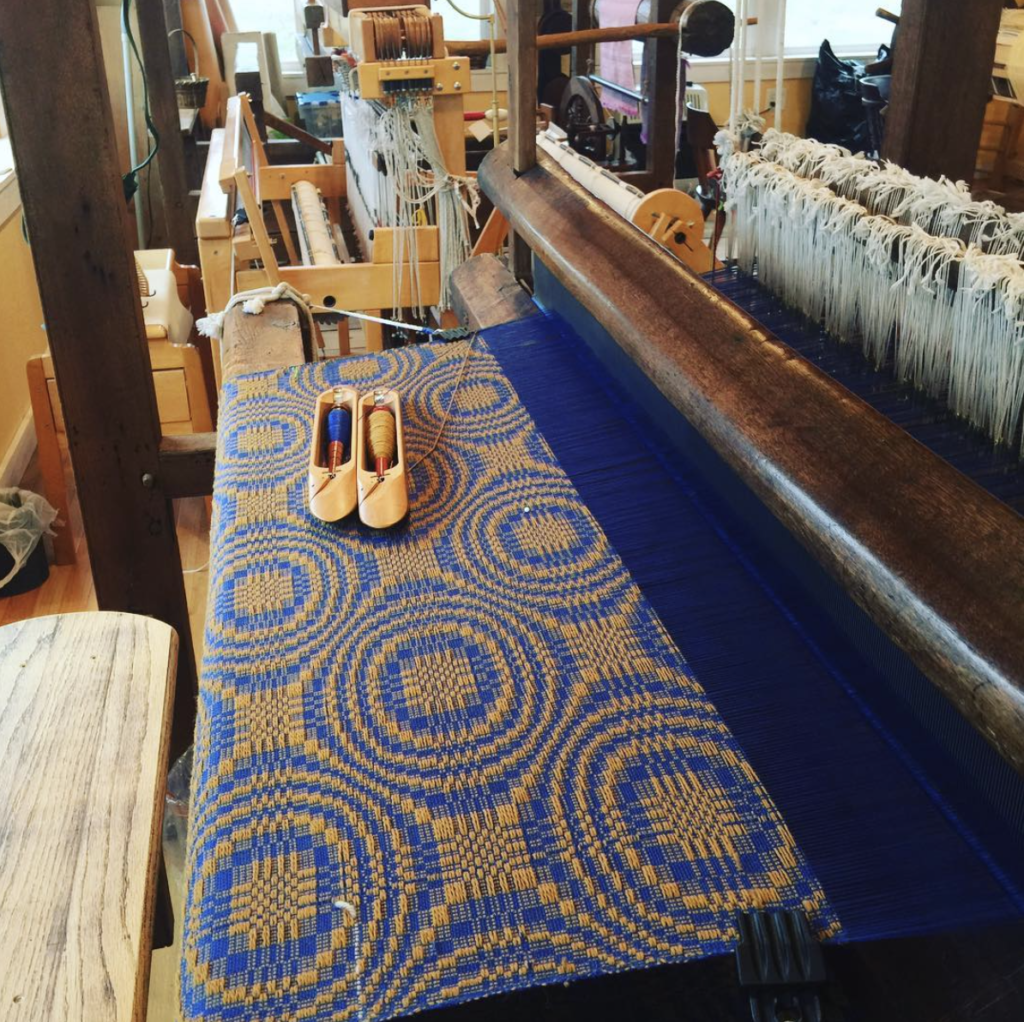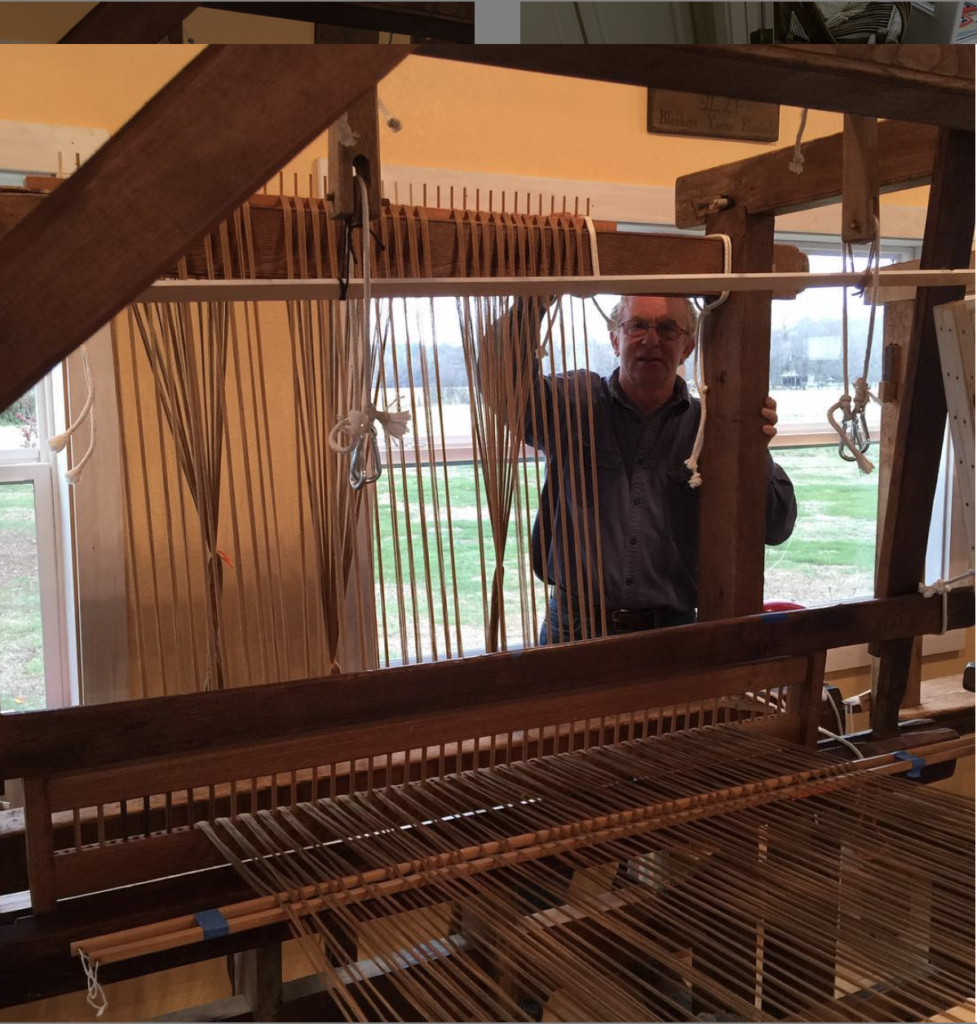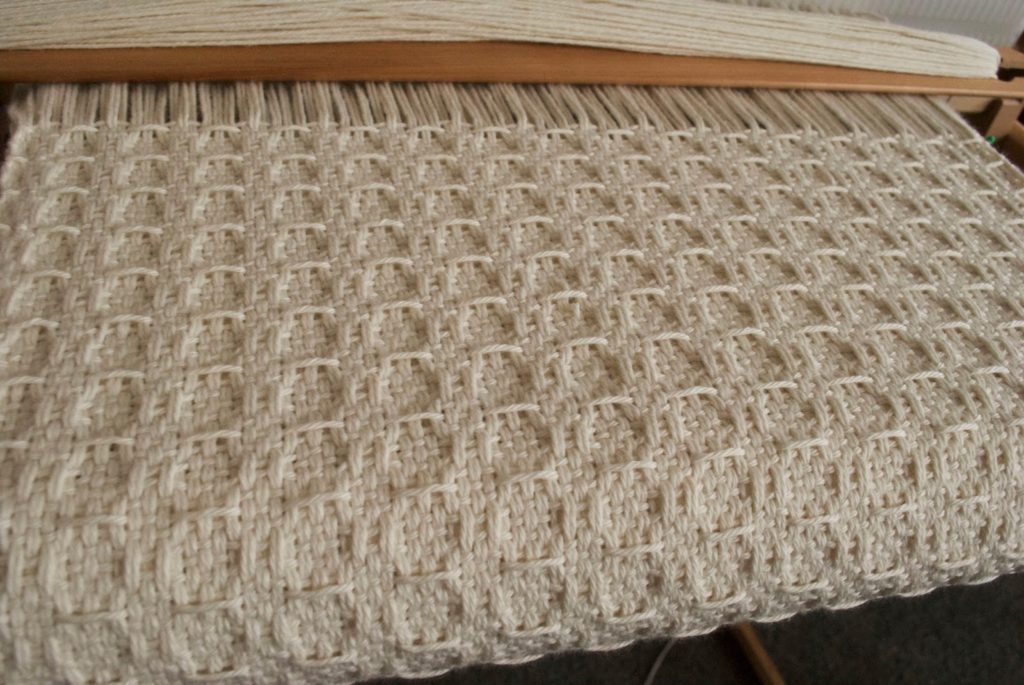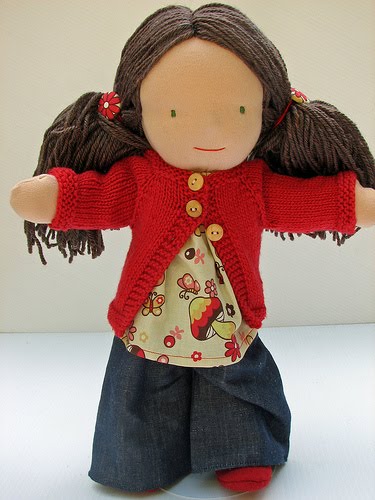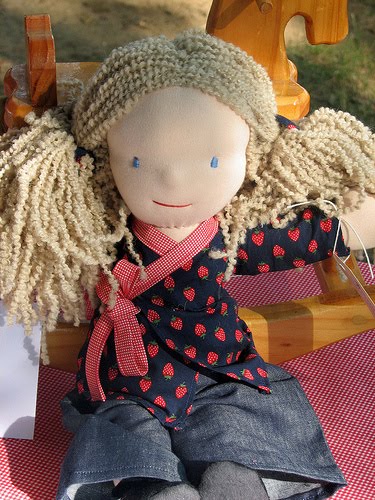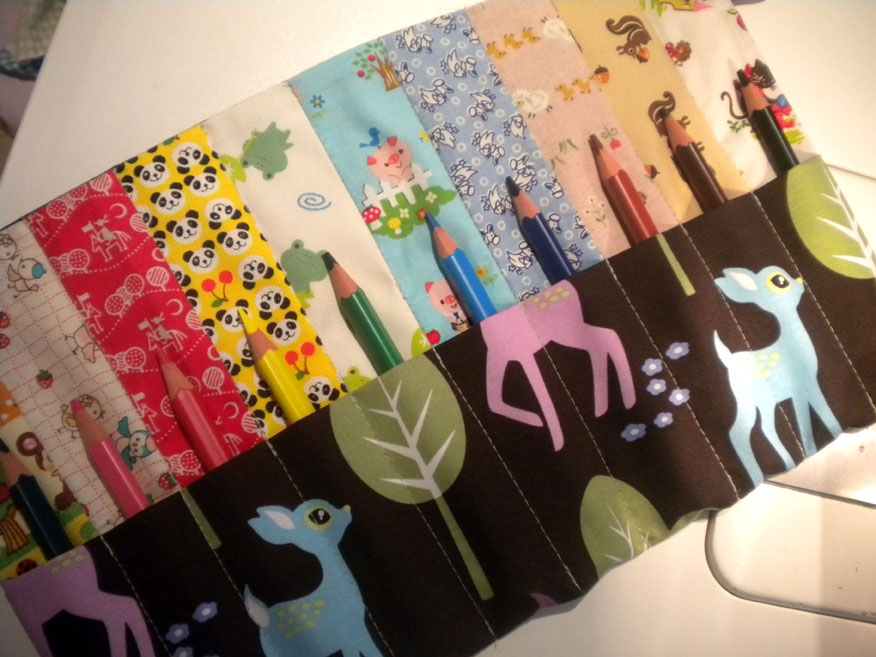Today I would love to introduce you to Martha of Thistle Rose Weaving. I am a long time admirer of her timeless and classy woven pieces. I know you will find her story very interesting!
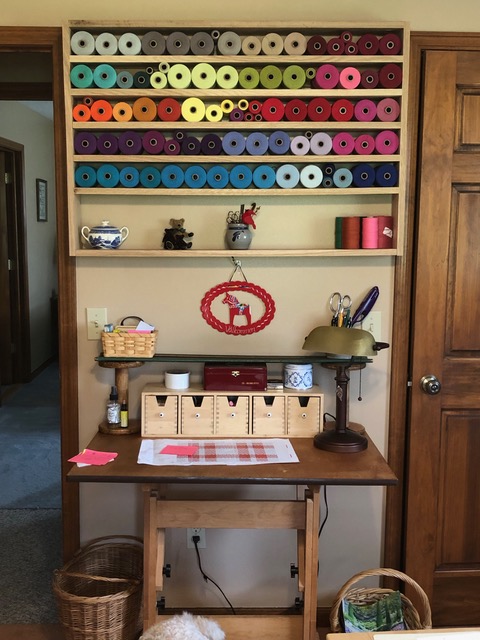
What attracted you to weaving? How did you learn?
” When I was a young teen my family lived next door to a Swedish family. Everyday on my way to and from school I would see our neighbor, Mrs. Skarstad sitting at her huge Swedish CM loom. My curiosity finally got the better of me and I knocked on her door to ask her what what she was doing with that “thing” that was in her window. After watching her weave a beautiful white linen tea towel, I was hooked. Unfortunately my parents were not in interested in buying me an expensive floor loom and my dream of weaving like Mrs. Skarstad stalled, sputtered and went into remission.
My weaving dream remained in the back of mind for many years but time and life got in the way until one day in 1997 I had the idea that if I wanted to learn to weave I better get busy and do so. Without any idea of what I was doing I bought a very old 4 shaft Kessenich loom from a tiny fabric store in Madison, WI and then ordered Chandler’s “Learning to Weave” book. I sat down and proceeded to teach myself to weave. Without access to any weaving teachers I learned via books and good old fashioned trail and error. The internet was just beginning back then and not many weavers were posting at that time.”
Do you have any other arts and crafts you spend time on?
“I also occasionally knit, spin and sew, but weaving is my true love and I spend as much time as I can working on my looms.”

How long has your Etsy shop been open? Did you aim to sell your weaving or is it something that just came about?
“My studio is called Thistle Rose Weaving – it is my way of proclaiming affection and admiration for the historical figures Mary Queen of Scots and Queen Elizabeth I. I enjoy the fact that I can in some small way combine two of my interests, renaissance history and weaving. My shop on Etsy was opened in 1997 as a way to sell my textiles to the public. “
Your woven pieces have a very distinct, classic and historic style. Is this something that you strive for?
“Here at Thistle Rose Weaving I delight in weaving heirloom quality traditionally inspired table linens and textiles. I try to use primarily natural fibers in all my work along with a dash of inspiration from the nature that surrounds my country home. Traditional Scandinavian weaving techniques have always interested me, I feel that classic design is timeless and blends into any decor. I strive to provide my clients with well made high quality textiles that will stand the test of time.”
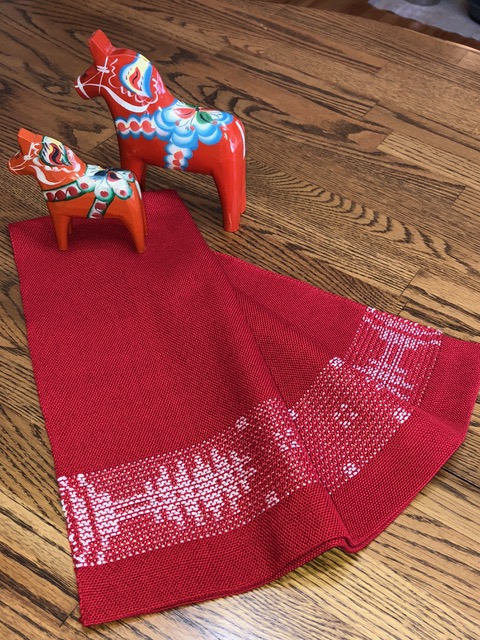
What are your favourite fibres to use and why?
” Cottolin yarns, those spun with 45% linen and 55% long staple cotton fibers are my favorite yarns to work with for household textiles. Good long staple cottons that are colorfast are also a staple of my yarn stash – working with natural fiber yarns is expensive but pays off in the long run by being long lasting and beautiful. Silk or silk blends are also a joy to use when I turn my interests towards weaving shawls and scarves. “
What single item do you seem to make or sell the most of?
“I am primarily known as a towel weaver. Many weavers do not like to weave long warps of towels because they find the endless warps too repetitive. I enjoy the challenge of weaving towels with different treadlings and color change. I strive to make each towel something special. Using traditional weaving drafts and modifying them to my taste is something that keeps me coming back to my loom time and again.”

Are there any challenges for you in making a living from your weaving?
“The time it takes to design an item, warp the yarns, set up the loom, weave, wash, iron and finish the handwoven textile is very long. If a weaver actually charged a living hourly wage for just the labor alone, one tea towel would cost well over $75.00 or more. Most weavers are never going to get rich weaving, we would love to be able to support our family with this ancient fine craft but in today’s society that is not going to happen.”
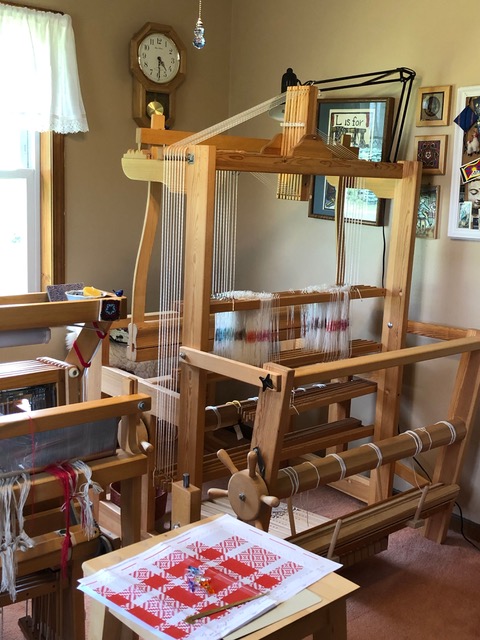
What are your hopes and plans for the future of your business?
“I hope to keep weaving well into the future and do harbor a dream of opening a weaving studio somewhere out in the public eye where I can run an open studio. It would be great to demonstrate and teach those who are interested in learning. ”
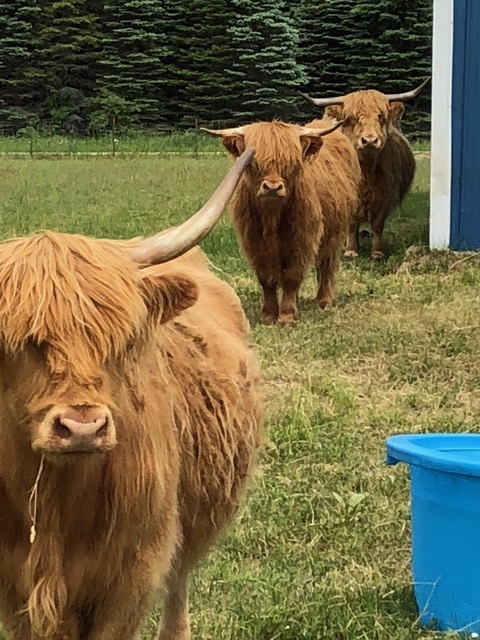
Being based in Brethren, Michigan, what do you love about where you live?
“My husband and I moved to Brethren, MI just over a year ago. After a 22 year career in the military and a second 12 year career in the public sector my husband decided it was high time we get busy and build the farm we have long dreamed of. We moved to Northern Michigan to start our farm, Witcher Highland Cattle where we raise registered Scottish Highland Cattle. Some say we are nuts to begin yet another career but we are happy to live surrounded by the Manistee National Forrest, Lake Michigan and our beloved farm. Life is good.”
Thanks to Martha for joining us today and sharing a little of her weaving life with us! If you want to check out her beautiful woven pieces (and I know you will!) you can find the Thistle Rose Weaving shop here.
Thanks for taking the time to read, until next time…
Happy Weaving!

